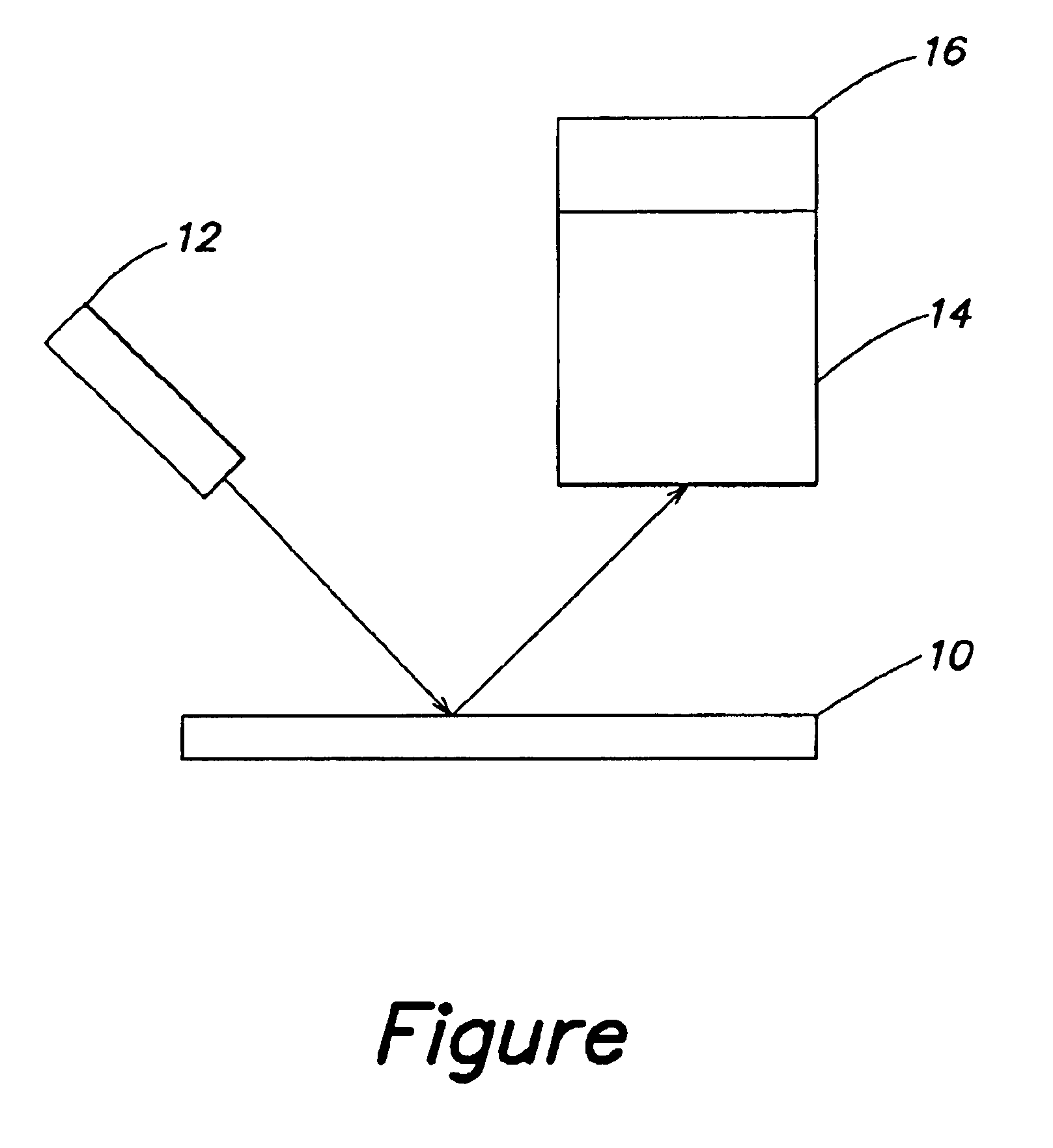Direct detection of bacteria-antibody complexes via UV resonance Raman spectroscopy
- Summary
- Abstract
- Description
- Claims
- Application Information
AI Technical Summary
Benefits of technology
Problems solved by technology
Method used
Image
Examples
Embodiment Construction
Bacterium, Escherichia coli, was grown in 50 ml of Trypticase soy broth (without glucose) in a shaking waterbath at 37° C. overnight. The bacteria were pelleted by centrifugation (12,100×g for 5 minutes at 4° C.), washed once in 20 ml of 0.85% saline and resuspended in 5 ml of 0.025M sodium phosphate buffer pH 7 to which was added 2.25-25 μl of anti-Escherichia coli (rabbit anti E. coli all ag's—purified IgG fraction 4-5 mg / ml protein, purchased from Biodesign International, Kennebunk, Maine). This was put into a continuous cycle loop, feeding through a quartz flow cell positioned in the laser beam.
Laser light 242 nm was directed into the flow cell. The emitted light energy (resonance enhanced Raman scattering) was sensed with a Raman detector. The spectrum was read and the prominent peak at 1485 cm−1 was easily detected. The tests confirmed that the spectral characteristics of the antibody are relatively weak and do not affect the spectra of the emitted light energy from the bacter...
PUM
 Login to View More
Login to View More Abstract
Description
Claims
Application Information
 Login to View More
Login to View More - R&D
- Intellectual Property
- Life Sciences
- Materials
- Tech Scout
- Unparalleled Data Quality
- Higher Quality Content
- 60% Fewer Hallucinations
Browse by: Latest US Patents, China's latest patents, Technical Efficacy Thesaurus, Application Domain, Technology Topic, Popular Technical Reports.
© 2025 PatSnap. All rights reserved.Legal|Privacy policy|Modern Slavery Act Transparency Statement|Sitemap|About US| Contact US: help@patsnap.com

